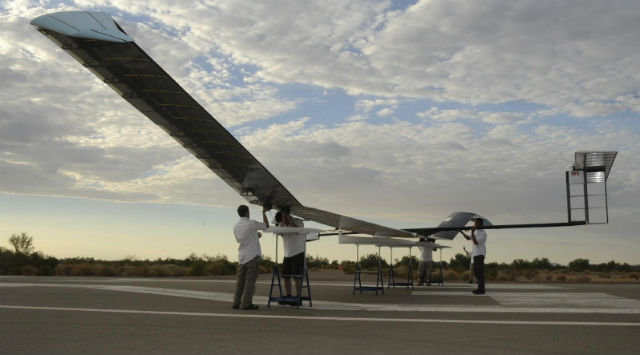Airbus will later this year conduct a flight test campaign with an improved version of the Zephyr high-altitude, long-endurance unmanned air system design recently acquired from Qinetiq, and believes a niche market exists for the product.
Referring to the solar-powered Zephyr as a “high-altitude pseudo-satellite”, Jens Nielsen, head of unmanned aerial systems for Airbus Defence & Space’s Military Aircraft unit, says a production version could perform tasks as a communications relay and persistent surveillance asset in the future.

The Zephyr 7 airframe acquired from Qinetiq (file image shown above) has a payload capacity of 5-10kg (11-22lb), but Nielsen notes: “We have a roadmap to increase this payload – this is why we are building a Zephyr 8, and then we will build a generation-one [UAV] thereafter.”
Recent supporting work has included testing the aircraft’s communications fit and electro-optical sensor, he adds, with Airbus having drawn on its satellite production experience to minimise the volume and weight required to house key equipment. The UAV currently has a 23m wingspan, and a take-off weight of only 100kg.
Speaking in Seville, Spain, Nielsen adds that Airbus is intending to better the 14-day flight endurance record so far achieved with the Zephyr aircraft. The company acquired the design in 2013 after several years of work and testing performed by the UK technology company.
Source: Flight International























